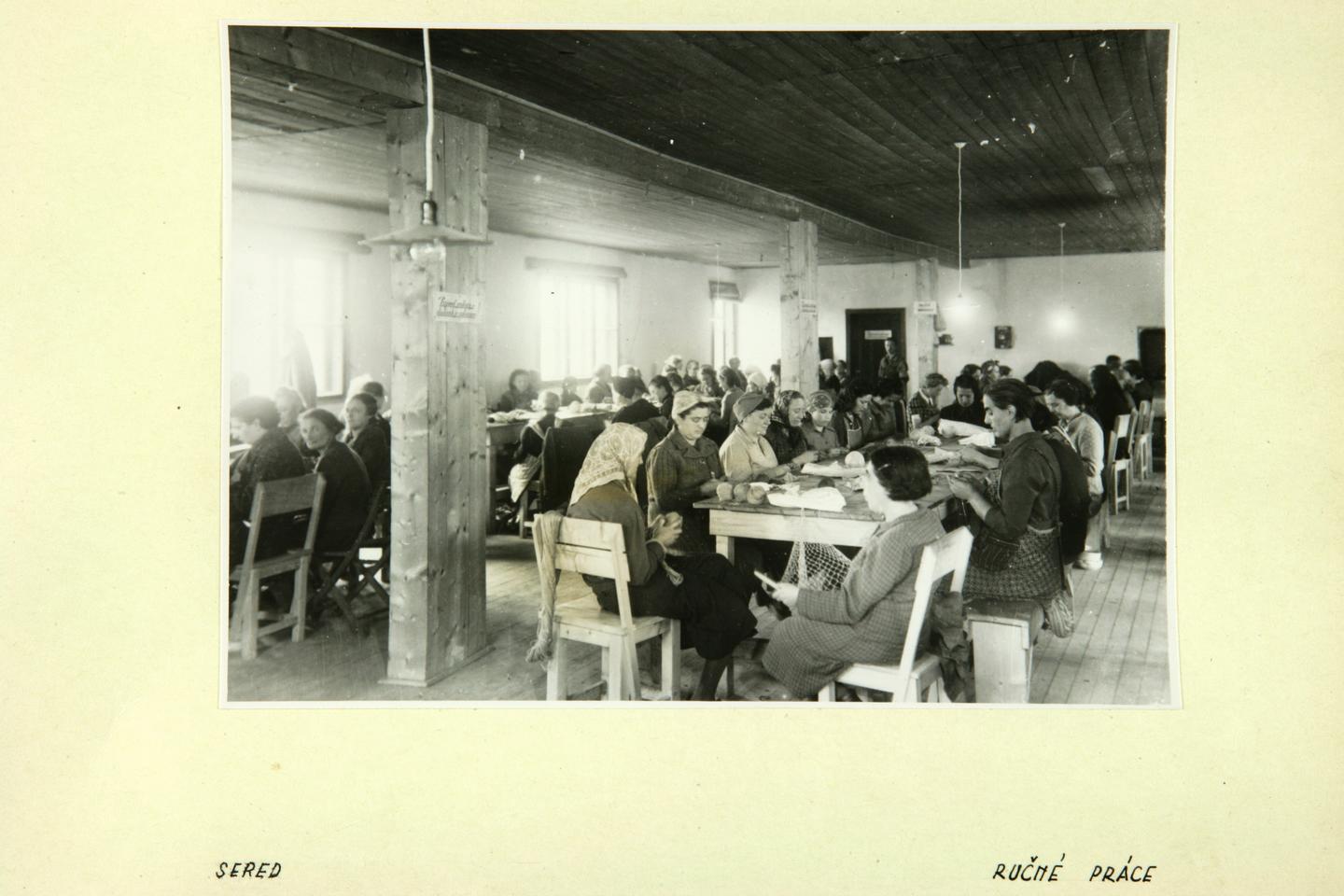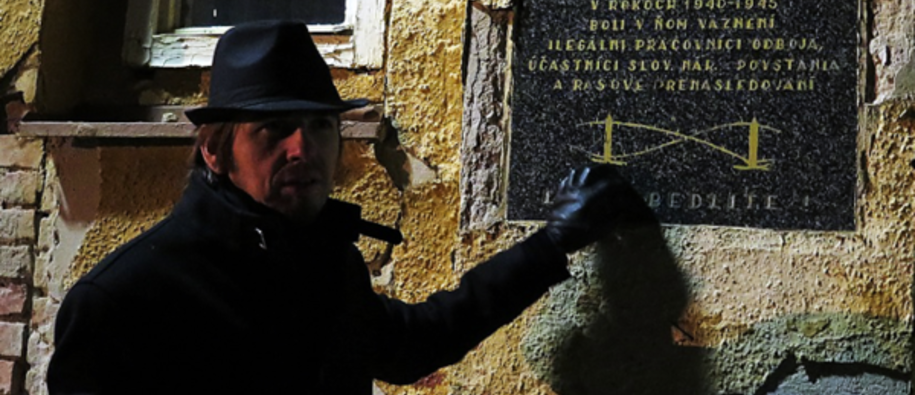The day falls on the anniversary of the liberation of the Auschwitz death camp in 1945, after a million people perished there. Whilst the vast majority of the victims were Jews, millions of others – Roma, homosexuals, prisoners of war, the disabled – were also persecuted and murdered.
A number of initiatives supported by the Grants work to tackle anti-Semitism and foster a shared culture of remembrance.
Survivor stories
Seventy years on, the horrors of the Holocaust are still vivid in the memories of the survivors. Eva Kohnová, now 82 years old and living in Haifa in Israel, was born in Handlová, a small town in Slovakia. Her heart-wrenching testimony is one of several depicted in a series of short films that have been produced as part of the 'Sereď Testimonies' project. Financed by Iceland, Liechtenstein and Norway through the €3.7 million NGO programme in Slovakia, the project aims to ensure that this tragedy is never forgotten.
“Handlová was mainly populated by Germans working in the mines, Czechs and Slovaks. There was a small Jewish community. Before the war, we all got along well. But in 1939 the pogroms began and everything changed. I was a small child - six years old,” recounts Eva in the film.
Eva's family were forced from their home and moved several times before they were sent to Sereď camp, 60 kms to the east of Bratislava. Sereď was one of three large forced labour camps for Jews established in Slovakia - a close ally of the German Reich. It is the only one left today - standing as a mute but concrete testimony of man's inhumanity to man.
“The worst were the roll calls or 'appels'. The guards would order all the Jews to line up in the courtyard. One night, my father was sent into the group destined for the train. Shortly afterwards my mother was pulled off to join him,” she said fighting back the tears, the emotion still raw even after all these years.
“For years I could still see the image of the two SS soldiers pulling my mother by the hands as she wept and screamed to stay with her children. That was how I parted from my mother.”
Deep scars
Eva's account chimes with that of many thousands of victims. As in many parts of Europe, the Holocaust left deep scars on Slovakia. In 1940, around 90 000 Jews lived in Slovakia. Almost 80% were killed during World War 2. Today the Jewish community numbers only 2 700.
Visiting the camp earlier this month, we were shown around by Dr Martin Korčok, Head of the Holocaust Museum Sereď and the Director of EDAH Civil Association - the NGO running the ‘Sereď Testimonies’ project. It’s hard to deny the awful reality of the camp which now lies derelict, or the railway line that brought so many to their deaths.
He told us how between 1942 and 1944, 57 752 Jews were deported from what was then the territory of Slovakia. The majority of them perished in concentration camps. 16 000 Jews were deported from Sereď, mainly to the then territory of occupied Poland. The fascist regime of the wartime Slovak state played an active role in the persecution of Jews. This was for a long time a source of shame.
“As a nation we are still very young. It is difficult to face up to difficult history. But if we want to face up to the problem, we also need to face up to our history,” declared Martin.
This is echoed by Ján Mazúr of the Open Society Foundation which manages the NGO programme in Slovakia:
“The acts committed by Slovaks during WW2, especially participation in the Holocaust, represent a relatively less processed part of the nation's young history. It is absolutely vital that this period is well understood and taught at schools truthfully.”
Important lessons
Three educational films featuring personal testimonies of survivors are being produced by EDAH as part of the 'Sereď Testimonies' project. The project is also filling the gaps in Holocaust education in primary and secondary schools. A text book has been developed in cooperation with the Ministry of Education, covering the period 1938-1945 and addressing what happened to Slovakia’s Jewish population during that period. It is freely available for use in all schools and is now a recommended part of the curriculum.
During our visit to the camp, Martin spoke about the importance of the project in bringing understanding to a new generation:
“It is through documentary films, new textbooks, and the training of teachers that we remember these moments in history. This is also how we are trying to stop history from being distorted or even forgotten, including Slovak history.”
“Remarkable projects, such as this, shine a light on our history by reconstructing forgotten parts of it and by showing particular stories of real people, our neighbours. This teaches us important lessons and leaves warnings for the future never to repeat the history,” added Ján.
Walking around the dilapidated barracks buildings, it remains a struggle to imagine the scale of the barbarity that took place in Sered'. Yet the ghosts of history are all around.
As we stood on a patch of scrubland at the back of the barracks, Martin told us how we were standing on a mass grave. In September 1944, two SS officers from Bratislava, František Knollmayer and Jozef Häckel, assumed command of the camp. On one particular night they summoned all prisoners, the young, the old, the sick to the courtyard, and forced them to march around for hours while they were whipped and beaten. Several were then shot and their bodies dumped into a swimming pool. Their grave now lies overgrown and unmarked.
But that is soon to change. The site is to be renovated as a museum of remembrance and educational centre which will seek to tell the story of the Holocaust through lessons taught by survivor testimonies, like that of Eva, whilst also helping to ensure that the memory of those whose lives were lost are honoured. It will also commemorate those non-Jewish Slovaks who risked their lives to help the Jews during the war.
For Martin, survivor testimony is at the heart of Holocaust education:
"Our goal is to make sure that the coming generations also realise that the worst thing is to forget."
This sentiment cannot resonate enough. Seventy years on, the anniversary comes again at a time of renewed worry for Jews in many countries in Europe where anti-Semitic attacks have been on the rise. The message of ‘never again’ is as relevant and as necessary as ever.
About EDAH
The EDAH Civic Association was founded in 2008 and works closely with the Museum of Jewish Culture in Bratislava. A major aim of the organisation is to research Jewish history and make it accessible to a wider public. EDAH plays an important role in combating racism, and anti-Semitism by developing teacher training programmes and producing educational materials and resources on Jewish history and culture.

